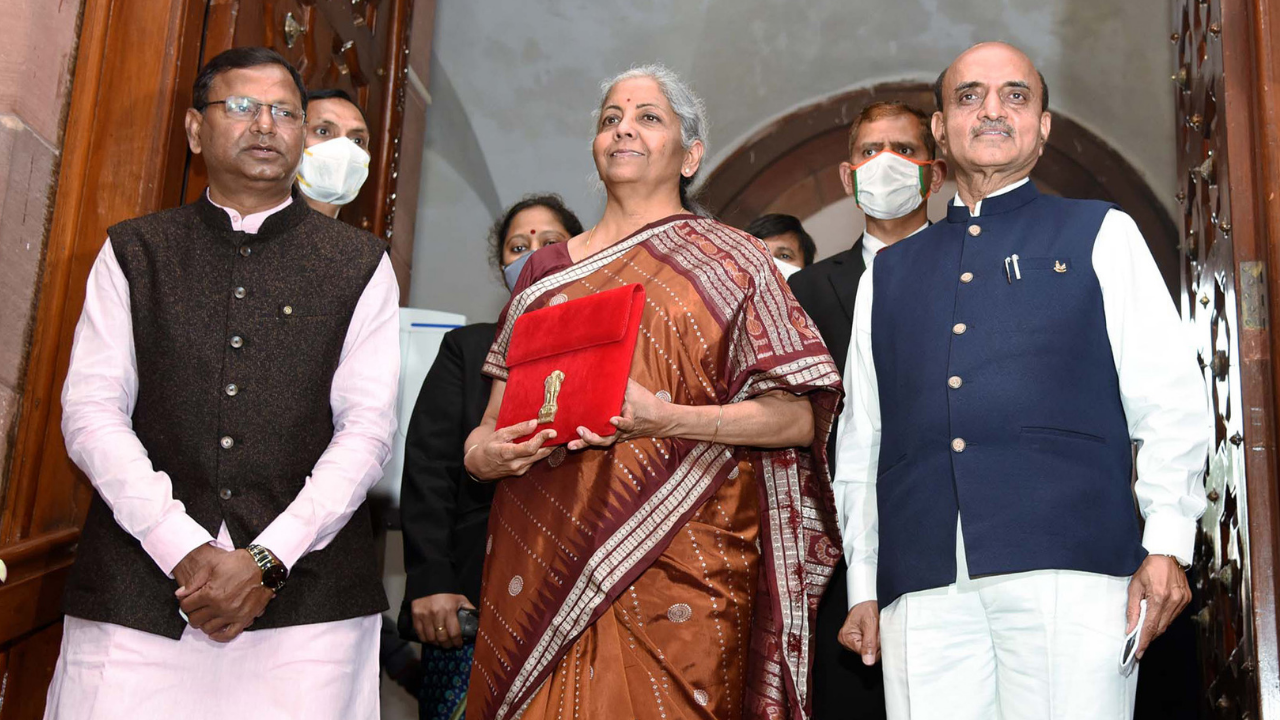Budget 2022 provides a boost to the manufacturing industry and the overall economy
#Budget2022 #UnionBudget #BudgetBoost #FinanceMinisterHighlighting the fact that with the estimated growth of 9.2% in the current year and India being the highest among all large economies, the Finance Minister said that this futuristic and inclusive budget continues to provide impetus for growth

February 2022 : Seeking to complement macro-economic level growth with a focus on an all-inclusive welfare at the micro-economic level, the Union Minister for Finance & Corporate Affairs, Nirmala Sitharaman tabled the Union Budget 2022-23 in Parliament on 1 February, 2022. “We are marking Azadi ka Amrit Mahotsav, and have entered into Amrit Kaal, the 25-year-long lead up to India @100,” the Finance Minister (FM) said while presenting the Union Budget 2022-23 in the Parliament. The Minister stated that this Budget seeks to lay the foundation and give a Blueprint to steer the economy over the Amrit Kaal of the next 25 years “from India @75 to India @100.”
Four priorities: The Minister stated that PM GatiShakti; Inclusive Development; productivity enhancement & investment, Sunrise opportunities, Energy transition and Climate action; and financing of investments are the 4 priorities of this futuristic and holistic budget.
Budget for Growth: Highlighting the fact that with the estimated growth of 9.2% in the current year and India being the highest among all large economies, the Finance Minister said that this futuristic and inclusive budget continues to provide impetus for growth, which would ensure direct benefit to our Youth, Women, Farmers, the Scheduled Castes and the Scheduled Tribes. PM GatiShakti shall guide ‘big public investments’ for modern infrastructure to be benefitted by the synergy of Multi-Modal Approach. She further said that the country’s strong resilience is being reflected in the sharp rebound and recovery of the economy. The FM said that 60 lakh new jobs will be created under the productivity linked incentive scheme in 14 sectors and the PLI Schemes have the potential to create an additional production of Rs 30 lakh crore.
Here’s what the Budget has in store for various sectors:
Solar
To facilitate domestic manufacturing for the ambitious goal of 280 GW of installed solar capacity by 2030, an additional allocation of RS 19,500 crore for Production Linked Incentive for manufacture of high efficiency modules, with priority to fully integrated manufacturing units from polysilicon to solar PV modules, will be made.
Telecom
Design-Led Manufacturing Scheme proposed by the Budget to build a strong ecosystem for 5G.
Defence
The Budget reiterates the Government’s commitment to promote atmanirbharta in equipment for the Armed Forces.
It has earmarked 68% of Capital Procurement Budget for the domestic industry in 2022-23, which is up from 58% in 2021-22.
Union Finance Minister said that Defence R&D will be opened up for industry, startups and academia with 25 per cent of defence R&D budget earmarked. Private industry will be encouraged to take up design and development of military platforms and equipment in collaboration with DRDO and other organizations through SPV model. She emphasized that an independent nodal umbrella body will be set up for meeting wide ranging testing and certification requirements.
Electronics
Customs duty rates to be calibrated to provide a graded rate structure - to facilitate domestic manufacturing of wearable devices, hearable devices and electronic smart meters.
Duty concessions to parts of transformer of mobile phone chargers and camera lens of mobile camera module and certain other items – To enable domestic manufacturing of high growth electronic items.
Chemicals
Customs duty on certain critical chemicals namely methanol, acetic acid and heavy feed stocks for petroleum refining being reduced; Duty is being raised on sodium cyanide for which adequate domestic capacity exists – This will help in enhancing domestic value addition.
MSME
Customs duty on umbrellas being raised to 20 per cent. Exemption to parts of umbrellas being withdrawn.
Exemption being rationalised on implements and tools for agri-sector which are manufactured in India
Customs duty exemption given to steel scrap last year extended for another year to provide relief to MSME secondary steel producers
Certain Anti- dumping and CVD on stainless steel and coated steel flat products, bars of alloy steel and high-speed steel are being revoked – to tackle prevailing high prices of metal in larger public interest.
Incentive for new manufacturing entities
Newly incorporated manufacturing entities will be incentivized under concessional tax regime. Income from transfer of virtual assets will be taxed at 30%. The budget proposes better litigation management to avoid repetitive appeals.
Exports
To incentivise exports, exemptions being provided on items such as embellishment, trimming, fasteners, buttons, zipper, lining material, specified leather, furniture fittings and packaging boxes.
Project imports and capital goods
Gradually phasing out of the concessional rates in capital goods and project imports; and applying a moderate tariff of 7.5 percent – conducive to the growth of domestic sector and ‘Make in India’.
Certain exemptions for advanced machineries that are not manufactured within the country shall continue.
A few exemptions introduced on inputs, like specialised castings, ball screw and linear motion guide - to encourage domestic manufacturing of capital goods.
More than 350 exemption entries proposed to be gradually phased out, like exemption on certain agricultural produce, chemicals, fabrics, medical devices, & drugs and medicines for which sufficient domestic capacity exists.
Simplifying the Customs rate and tariff structure particularly for sectors like chemicals, textiles and metals and minimise disputes; Removal of exemption on items which are or can be manufactured in India and providing concessional duties on raw material that go into manufacturing of intermediate products – in line with the objective of ‘Make in India’ and ‘Atmanirbhar Bharat’.
NEWSLETTER
TRENDING ON PRO MFG
MORE FROM THE SECTION





.png)


